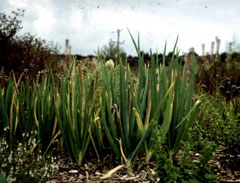 |
|
(c) 2010 Ken Fern, Plants For A Future |
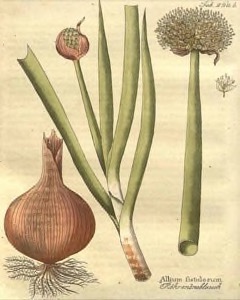 |
|
Translate this page:
Summary
All members of this genus are, at least theoretically, edible. Their flavours range from mild onions and leeks to pungent onion and garlic. All parts of the plants are edible. The flowers have a more robust flavour than the leaves, and the young developing seed heads are even more potent. Eat the leaves and flowers in salads for a plentiful supply throughout the year. Use cooked leaves as a flavour with other vegetables in soups or use them as a cooked green. Some favourite species are listed below. Unless stated otherwise, all members of this genus require well-drained soil and a sunny position. They do not grow well with weed competition, though there are exceptions.
Allium cepa. This species includes the common onion and the charming and productive form called the Everlasting Onion. Everlasting Onions grow similarly to chives, quickly forming a large clump. The Potato Onion (A. cepa aggregatum) has strong floured leaves with a strong onion flavour. Use the flowers raw as a garnish on salads. The Egyptian Walking Onion (A. cepa proliferum) forms small edible bulbs at the top of the flowering stem. They have a strong onion flavour and are often used as pickled onions or added to salads. The Nodding Onion (A. cernuum) is an exceedingly beautiful plant, but both flowers and leaves have a delicious strong onion flavour – the flowers look lovely in a mixed salad.
The Welsh Onion (A. fistulosum) is similar to the Everlasting Onion in growth habit and flavour. Daffodil Garlic (A. neapolitanum) young leaves have a delicious sweetness followed by a moderately strong garlic flavour. Chives (A. schoenoprasum) are a very productive crop supplying mild, onion-flavoured leaves in full sun to semi-shade positions. Garlic Chives (A. tuberosum) form a slowly spreading clump; leaves have a delightful flavour, like a cross between garlic and chives. Garlic (A. sativum) leaves are edible raw or cooked, chopped and used in salads; they are relatively milder than the bulbs.
Physical Characteristics

 Allium fistulosum is a BULB growing to 0.6 m (2ft) by 0.2 m (0ft 8in) at a fast rate.
Allium fistulosum is a BULB growing to 0.6 m (2ft) by 0.2 m (0ft 8in) at a fast rate.
See above for USDA hardiness. It is hardy to UK zone 6 and is not frost tender. It is in flower in July. The species is hermaphrodite (has both male and female organs) and is pollinated by Bees, insects. The plant is self-fertile.
It is noted for attracting wildlife.
Suitable for: light (sandy), medium (loamy) and heavy (clay) soils and prefers well-drained soil. Suitable pH: mildly acid, neutral and basic (mildly alkaline) soils. It cannot grow in the shade. It prefers moist soil.
UK Hardiness Map
US Hardiness Map
Synonyms
Plant Habitats
Cultivated Beds;
Edible Uses
Edible Parts: Flowers Leaves Root
Edible Uses:
Bulb - raw or cooked[2]. A strong onion flavour, it can be used in salads, as a cooked vegetable or as a flavouring in cooked foods[22, K]. The bulbs are rather small, usually 10 - 25mm in diameter though they can be up to 45mm[266], and are sometimes used as spring onions[183]. A nutritional analysis is available[218]. Leaves - raw or cooked[2]. They have a mild onion flavour[183] and can be added to salads or cooked as a vegetable[116]. The leaves are often available all through the winter if the weather is not too severe[K]. They contain about 1.4% protein, 0.3% fat, 4.6% carbohydrate, 0.8% ash, some vitamin B1 and moderate levels of vitamin C[179]. Flowers - raw. A pleasant onion flavour, but they are rather on the dry side[K].
References More on Edible Uses
| Composition
|
| Figures in grams (g) or miligrams (mg) per 100g of food.
|
|
|
Leaves (Fresh weight)
|
|
- 0 Calories per 100g
- Water : 0%
- Protein: 1.4g; Fat: 0.3g; Carbohydrate: 4.6g; Fibre: 0g; Ash: 0.8g;
- Minerals - Calcium: 0mg; Phosphorus: 0mg; Iron: 0mg; Magnesium: 0mg; Sodium: 0mg; Potassium: 0mg; Zinc: 0mg;
- Vitamins - A: 0mg; Thiamine (B1): 0mg; Riboflavin (B2): 0mg; Niacin: 0mg; B6: 0mg; C: 0mg;
- Reference: [ ]
- Notes:
|
|
Medicinal Uses
Plants For A Future can not take any responsibility for any adverse effects from the use of plants. Always seek advice from a professional before using a plant medicinally.
Antibacterial Antifungal Antipyretic Diuretic Expectorant Stomachic Vitamin C
The bulb contains an essential oil that is rich in sulphur compounds[283]. It is antibacterial, antiseptic, diaphoretic, diuretic, galactogogue, stomachic, vermifuge and vulnerary[176, 218]. It is used in the treatment of colds and abdominal coldness and fullness[176]. A tea made from the roots is a children's sedative[218]. Use of the bulb in the diet impedes internal parasites[218]. Externally, the bulb can be made into a poultice to drain pus from sores, boils and abscesses[254].
References More on Medicinal Uses
The Bookshop: Edible Plant Books
Our Latest books on Perennial Plants For Food Forests and Permaculture Gardens in paperback or digital formats.
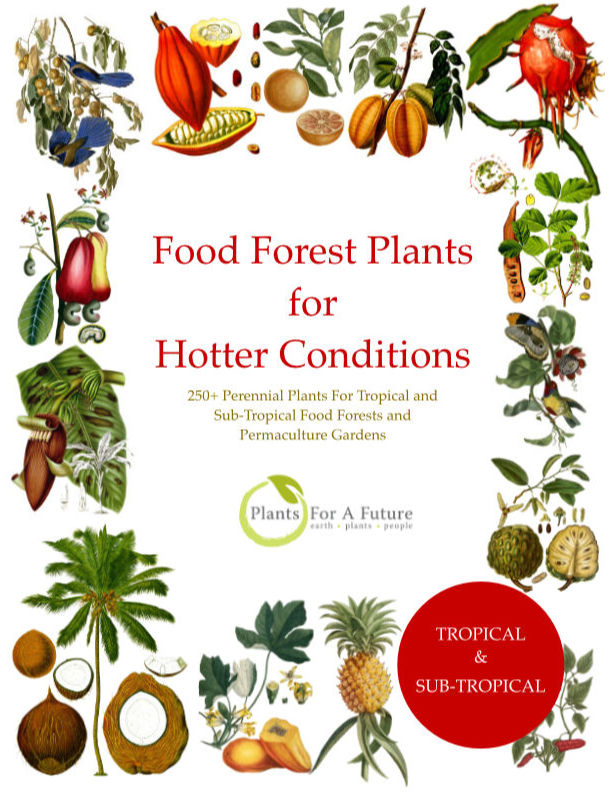
Edible Tropical Plants
Food Forest Plants for Hotter Conditions: 250+ Plants For Tropical Food Forests & Permaculture Gardens.
More
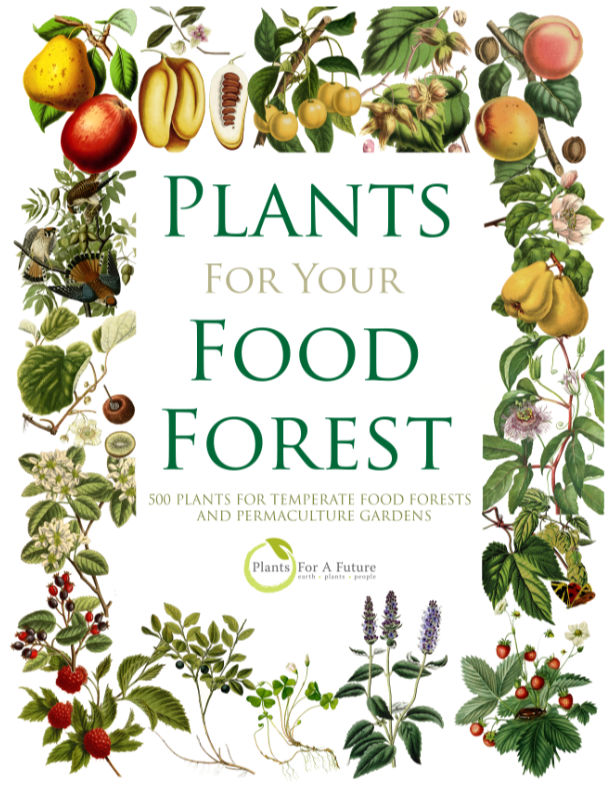
Edible Temperate Plants
Plants for Your Food Forest: 500 Plants for Temperate Food Forests & Permaculture Gardens.
More
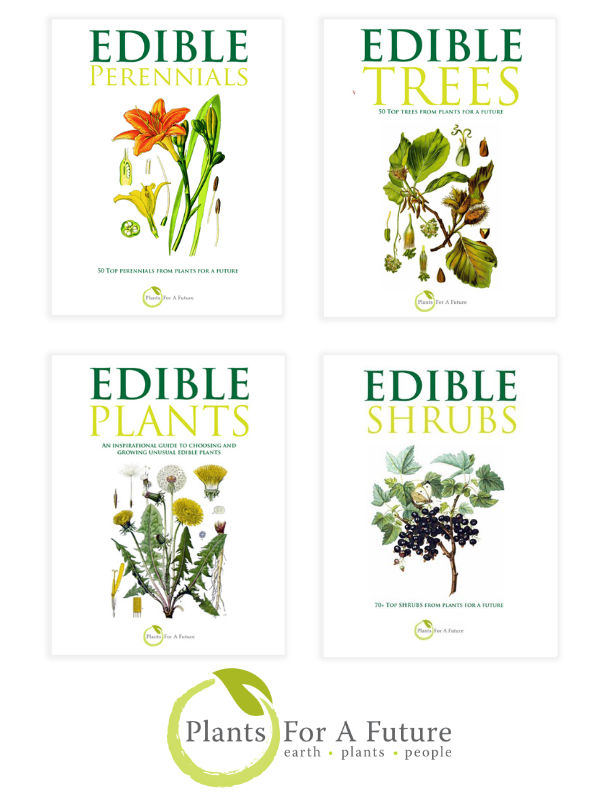
More Books
PFAF have eight books available in paperback and digital formats. Browse the shop for more information.
Shop Now
Other Uses
Repellent
The juice of the plant is used as a moth repellent. The whole plant is said to repel insects and moles[20]. 1. Nectary - Flowers rich in nectar and pollen:
Yes – Allium species produce flowers rich in nectar and pollen, attracting pollinators like bees and butterflies.
2. Wildlife - Food (Fruit, Seeds, Leaf litter, Shelter, Nesting, Roosting):
Yes – Allium species' bulbs, leaves, and flowers are edible and provide food for humans and wildlife. The leaf litter can also provide some habitat, though they are not typically used for nesting.
3. Invertebrate Shelter (Overwintering sites, Leaf litter, Groundcover):
No – While Allium plants can provide some ground cover, they are not specifically known for providing significant shelter or overwintering sites for invertebrates.
4. Pest Confuser (Smell):
Yes – The strong aroma of Allium species can help deter pests, acting as a natural pest confuser due to their sulfur compounds.
Special Uses
Food Forest
References More on Other Uses
Cultivation details
An easily grown plant[203], it prefers a sunny position in a light well-drained soil[1] but tolerates most soils[1, 52] including those that are damp and acid[203]. Prefers a pH in the range 6.5 to 7.5[206], but it tolerates a pH in the range 4.9 to 7.5. A very hardy species, it is related to the cultivated onion (A. cepa) and could be of value in breeding programmes. It is sometimes cultivated in the garden for its edible leaves which can be produced throughout the winter if the weather is not too severe[K]. A very popular cultivated vegetable in the Orient[206], it probably arose through cultivation from A. altaicum[203]. The oriental forms of this species, known as bunching onions, tend to be hardier and more robust than the welsh onion[206]. There are two basic forms, multi-stem types and single-stem types. The single-stem types divide less freely than the multi-stems[206]. Plants will often retain their leaves even when covered in snow[206]. They are also tolerant of high temperatures and can be grown in the tropics[206]. The plants are often eaten by slugs[K]. The bulbs should be planted fairly deeply[1]. Most members of this genus are intolerant of competition from other growing plants[203]. Grows well with most plants, especially roses, carrots, beet and chamomile, but it inhibits the growth of legumes[18, 20, 54]. This plant is a bad companion for alfalfa, each species negatively affecting the other[201]. Members of this genus are rarely if ever troubled by browsing deer[233]. For polyculture design as well as the above-ground architecture (form - tree, shrub etc. and size shown above) information on the habit and root pattern is also useful and given here if available. The plant growth habit is a clumper with limited spread [1-2]. The root pattern is a bulb. Alliums are typically harvested in late spring to early summer, when the bulbs mature and the tops begin to yellow. Allium species typically flower in late spring to early summer, depending on the species and local climate conditions. Allium species generally have a moderate growth rate, with bulbs typically taking about 100 to 150 days from planting to harvest, depending on the variety and growing conditions.
References Carbon Farming Information and Carbon Sequestration Information
Temperature Converter
Type a value in the Celsius field to convert the value to Fahrenheit:
Fahrenheit:
The PFAF Bookshop
Plants For A Future have a number of books available in paperback and digital form. Book titles include Edible Plants, Edible Perennials, Edible Trees,Edible Shrubs, Woodland Gardening, and Temperate Food Forest Plants. Our new book is Food Forest Plants For Hotter Conditions (Tropical and Sub-Tropical).
Shop Now
Plant Propagation
Seed - sow spring in a greenhouse. The seed germinates over a wide range of temperatures, it is faster at higher temperatures[206]. Prick out the seedlings into individual pots when they are large enough to handle. When well-grown, the plants should be ready to be planted out in the summer. If they are not large enough at this time, grow them on in the greenhouse for their first winter and plant them out in late spring. Division of the plants is very easy and can be done at almost any time of the year though the spring is probably best. The divisions can be planted out straight into their permanent positions if required.
Other Names
If available other names are mentioned here
Native Range
TEMPERATE ASIA: China South-Central,China North-Central.
Weed Potential
Right plant wrong place. We are currently updating this section.
Please note that a plant may be invasive in one area but may not in your area so it's worth checking.
Conservation Status
IUCN Red List of Threatened Plants Status :

| Related Plants
|
| Latin Name | Common Name | Habit | Height | Hardiness | Growth | Soil | Shade | Moisture | Edible | Medicinal | Other |
| Allium acuminatum | Hooker's Onion, Tapertip onion | Bulb | 0.3 |
5-9
| | LM | N | DM | 3 | 2 | 2 |
| Allium aflatunense | Persian Onion, Ornamental Onion | Bulb | 1.0 |
4-8
| M | LM | N | M | 2 | 2 | 1 |
| Allium akaka | | Bulb | 0.2 |
7-10
| | LM | N | DM | 3 | 2 | 1 |
| Allium altaicum | | Bulb | 0.3 |
-
| | LM | N | M | 3 | 2 | 1 |
| Allium ampeloprasum | Wild Leek, Broadleaf wild leek | Bulb | 1.8 |
5-9
| | LMH | N | DM | 5 | 3 | 2 |
| Allium ampeloprasum babingtonii | Babington's Leek | Bulb | 1.8 |
0-0
| | LMH | N | DM | 3 | 3 | 2 |
| Allium angulare | | Bulb | 0.0 |
-
| | LM | N | M | 3 | 2 | 1 |
| Allium angulosum | Mouse Garlic | Bulb | 0.5 |
4-8
| | LMH | SN | M | 3 | 2 | 1 |
| Allium atropurpureum | | Bulb | 1.0 |
7-10
| | LM | SN | M | 3 | 2 | 1 |
| Allium bisceptrum | Aspen Onion, Twincrest onion | Bulb | 0.3 |
7-10
| | LM | N | M | 3 | 2 | 1 |
| Allium bodeanum | | Bulb | 0.2 |
-
| | LM | N | DM | 3 | 2 | 1 |
| Allium bolanderi | Bolander's Onion | Bulb | 0.2 |
6-9
| | LM | N | M | 3 | 2 | 1 |
| Allium brevistylum | Shortstyle Onion | Bulb | 0.5 |
-
| | LM | N | MWe | 3 | 2 | 1 |
| Allium canadense | Canadian Garlic, Meadow garlic, Fraser meadow garlic, Hyacinth meadow garlic | Bulb | 0.5 |
4-8
| | LM | SN | MWe | 4 | 2 | 2 |
| Allium canadense mobilense | Canadian Garlic | Bulb | 0.5 |
4-8
| | LM | SN | MWe | 5 | 2 | 1 |
| Allium carinatum | Keeled Garlic | Bulb | 0.6 |
6-9
| | LMH | SN | M | 3 | 2 | 1 |
| Allium carolinianum | | Bulb | 0.4 |
-
| | LM | N | DM | 3 | 2 | 1 |
| Allium cepa | Onion, Garden onion | Bulb | 0.6 |
4-10
| M | LM | N | M | 5 | 3 | 3 |
| Allium cepa aggregatum | Potato Onion | Bulb | 1.2 |
4-8
| M | LM | N | M | 4 | 3 | 3 |
| Allium cepa ascalonicum | Shallot | Bulb | 0.3 |
4-8
| | LM | N | M | 5 | 3 | 2 |
| Allium cepa proliferum | Tree Onion, Walking Onion | Bulb | 1.2 |
4-8
| M | LM | N | M | 5 | 3 | 3 |
| Allium cernuum | Nodding Onion, New Mexican nodding onion | Bulb | 0.5 |
5-9
| F | LMH | N | M | 5 | 2 | 2 |
| Allium chinense | Rakkyo | Bulb | 0.3 |
6-9
| | LM | N | M | 4 | 2 | 1 |
| Allium condensatum | | Bulb | 0.6 |
4-8
| | LM | N | M | 3 | 2 | 1 |
| Allium cupanii | | Bulb | 0.3 |
7-10
| | LM | N | DM | 3 | 2 | 1 |
| Allium douglasii | Douglas' Onion | Bulb | 0.3 |
0-0
| | LM | N | DM | 3 | 2 | 1 |
| Allium dregeanum | Wild Onion | Bulb | 0.6 |
-
| | LM | N | DM | 3 | 2 | 1 |
| Allium drummondii | Prairie Onion, Drummond's onion | Bulb | 0.3 |
6-9
| | LM | N | M | 3 | 2 | 1 |
| Allium flavum | Small Yellow Onion, Ornamental Onion | Bulb | 0.5 |
4-7
| M | LMH | SN | M | 2 | 2 | 1 |
|
|
Growth: S = slow M = medium F = fast. Soil: L = light (sandy) M = medium H = heavy (clay). pH: A = acid N = neutral B = basic (alkaline). Shade: F = full shade S = semi-shade N = no shade. Moisture: D = dry M = Moist We = wet Wa = water.
Now available:
Food Forest Plants for Mediterranean Conditions
350+ Perennial Plants For Mediterranean and Drier Food Forests and Permaculture Gardens.
[Paperback and eBook]
This is the third in Plants For A Future's series of plant guides for food forests tailored to
specific climate zones. Following volumes on temperate and tropical ecosystems, this book focuses
on species suited to Mediterranean conditions—regions with hot, dry summers and cool, wet winters,
often facing the added challenge of climate change.
Read More
Expert comment
Author
L.
Botanical References
266
Links / References
For a list of references used on this page please go here
Readers comment